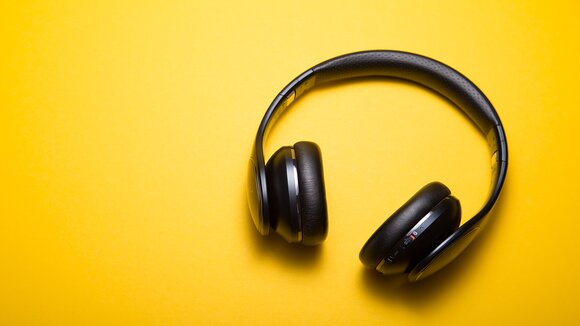What To Look For In Wireless Headphones
With the freedom that comes without having annoying wires in the way, wireless headphones have become a must-have accessory for our exercise sessions, when travelling and in our home offices.
If you’re looking to invest in a pair the good news is that there’s reams of choice, but that does mean we need to be clued up about what we’re looking for, and how much you’re willing to prioritise each of the snazzy features available.
With headphones ranging from £4.99 jobbies up to £800 top-of-the-range audio it’s important to know the key features that you’re getting for your hard-earned money.
Over-ear vs earbuds
When it comes to wireless headphones there are two main types that will inform the rest of the spec: whether they rest over your ear, or whether they pop in your ears. (There’s the halfway option of on-ears too, but they’re arguably the worst of both worlds.) Both options have come on leaps and bounds recently. Over-ears are super comfy, and they’re known for delivering audio with a good bass to it, while in-ear headphones have improved their audio output too and are more portable and discreet. Have a think about when you use your headphones, along with your personal preference for which type you like the most, to help you to work out which is right for you.
Battery life
Needing to worry about the battery is the main drawback of wireless headphones, though it’s a small price to pay for the freedom of movement that we get in return. The biggest impact on battery life is whether the headphones are over-ear or earbuds: expect over-ears to last around 18 hours, and earbuds, because of their compact size, to last around seven. But at least that’s perfect for a day’s work or a solo hike. Keep a look out for headphones with fast charging – that means even if you give it a 10-minute boost, it’ll last you for a long run.
Sound quality
For all the nifty features and cool design, ultimately, it’s the sound quality that really matters. As with any set of headphones, it’s a good idea to check reviews of the set you’re thinking of buying to see what other customers think of the quality. But with wireless headphones, it also helps to think about how the device connects to the audio source. iPhone owners will find better quality audio and shorter lag times using headphones that work with AAC (the only high-quality Bluetooth codec that iOS supports). Meanwhile, audio from Android phones generally sounds better with aptX or LDAC connections.
Noise-cancellation
Noise cancellation doesn’t just mean blocking out environmental noise through a tight seal. This type of headphones emit a sound frequency opposite to the background noise to make the net result silent – perfect for clearly listening to tunes on a plane, or drowning out office noise if you’re concentrating. Adaptive noise cancellation means that the frequencies emitted respond to the background noise at the time, which makes them more effective. Handily, some headphones offer the option of turning off the noise-cancelling feature to save on battery. It also helps if you’re out in places where you need to hear background noise, like walking in a city.
Microphone
It’s a sign o’the times that microphones are proving to be a must-have feature in headphones. Between Zoom calls and chatting to our family on FaceTime, a built-in microphone is key. Some have an advanced spec, like the ability to isolate your voice and exclude background noise. Generally speaking the higher in budget you go, the more sophisticated the microphone will be.
Wireless range
Finally, if you and your headphones won’t necessarily stay near the audio source, the range in which the headphones still work will be important. Might as well make the most of the roaming you can do with wireless tech, right? You’ll find that most headphones work with a range of 30 feet, but if you need it, look out for headphones with a range of up to 100 feet.
If you’re looking to protect your wireless headphones Switched On’s award winning cover offers real peace of mind with great prices, fast claims and exceptional service. You can insure your headphones on their own, or you can protect up to 10 gadgets on one policy for real peace of mind. And if you select an annual policy, you’ll get two months free! Find out more here.


